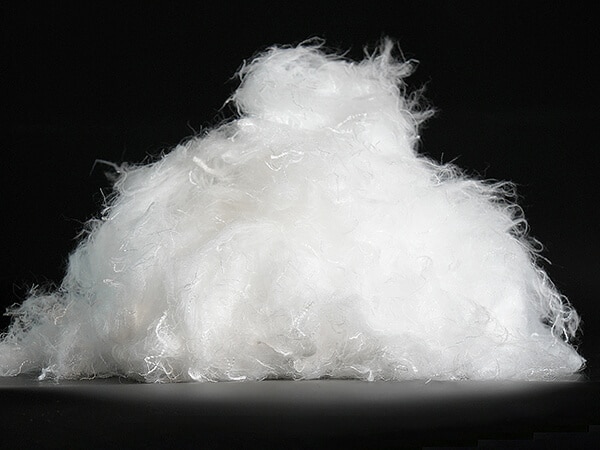As consumers become more aware of comfort, health, and sustainability, the materials used in clothing—especially undergarments—are undergoing major innovation. Among the new generation of textile materials, Polylactic Acid (PLA) fiber is standing out for its exceptional combination of breathability, softness, antibacterial properties, and environmental friendliness.
This article takes a closer look at how PLA fiber is being integrated into undergarments and why it’s reshaping user expectations in both functionality and sustainability.
I.What Is PLA Fiber and Why Does It Matter?
PLA fiber is a biodegradable material derived from lactic acid, typically sourced from renewable plant resources like corn or sugarcane. Unlike conventional synthetic fibers such as polyester or nylon, PLA boasts biocompatibility, making it gentler on the skin and more environmentally responsible.
It also aligns well with global sustainability goals and “dual-carbon” strategies by reducing the reliance on petroleum-based textiles and enabling compostable solutions.

II.Rethinking Undergarment Construction with PLA
Undergarments may look simple, but their structure is functionally intricate. For example:
- Women’s briefs usually consist of four main parts: the front panel, back panel, crotch piece, and a lining crotch for added comfort and moisture absorption.
- Men’s boxer briefs often involve symmetrical components for the front, back, and pouch areas.
While conventional synthetic fabrics provide stretch and structure, they often fall short in breathability and antibacterial protection—key concerns for intimate wear. PLA fiber emerges as a solution that enhances these essential qualities, especially when used in lining areas.
III.Key Advantages of Using PLA Fiber in Undergarments
1. Softness and Comfort
PLA fiber features a silky-smooth surface and soft hand feel, providing superior comfort for direct-to-skin garments.
2. Dryness and Breathability
Thanks to its naturally breathable structure, PLA helps maintain dryness in sensitive areas. It allows better air and vapor circulation, reducing moisture accumulation and the risk of bacterial growth.
3. Natural Antibacterial Properties
PLA’s chemical composition gives it intrinsic antibacterial and antifungal abilities, reducing odor and irritation. Its pH compatibility with human skin further improves user safety and comfort—ideal for those with sensitive skin or allergies.
4. All-Season Thermoregulation
In colder months, PLA fibers offer excellent insulation. In warmer conditions, they wick moisture efficiently and allow heat to dissipate, creating a cool, dry feel—making it a versatile material for year-round wear.
5. Resilient Without Compression
With high tensile strength and elasticity, PLA can deliver supportive shaping (like tummy control or hip lift effects) without feeling tight or restrictive.
6. Environmentally Friendly
One of PLA’s most important features is its biodegradability. When disposed of properly, it breaks down in industrial composting conditions, unlike synthetic fibers that contribute to microplastic pollution.
.jpeg)
IV.Beyond Undergarments: Broader Apparel Applications
While PLA fiber is highly effective in undergarments, its performance characteristics also make it suitable for:
- Sportswear: Breathable, quick-drying, and odor-resistant.
- Children’s clothing: Gentle on sensitive skin and naturally antibacterial.
- Denim and casualwear: Lightweight and comfortable with a sustainable twist.
V.Conclusion
PLA fiber offers a compelling combination of comfort, versatility, and eco-friendliness for undergarments and beyond. As sustainability becomes a core demand in the fashion industry, materials like PLA will continue to gain traction—not just for their green credentials but for enhancing the wearer’s experience.
If you’re seeking to upgrade your undergarment product lines or explore eco-innovations in textiles, eSUN welcomes your inquiries and collaboration opportunities.





